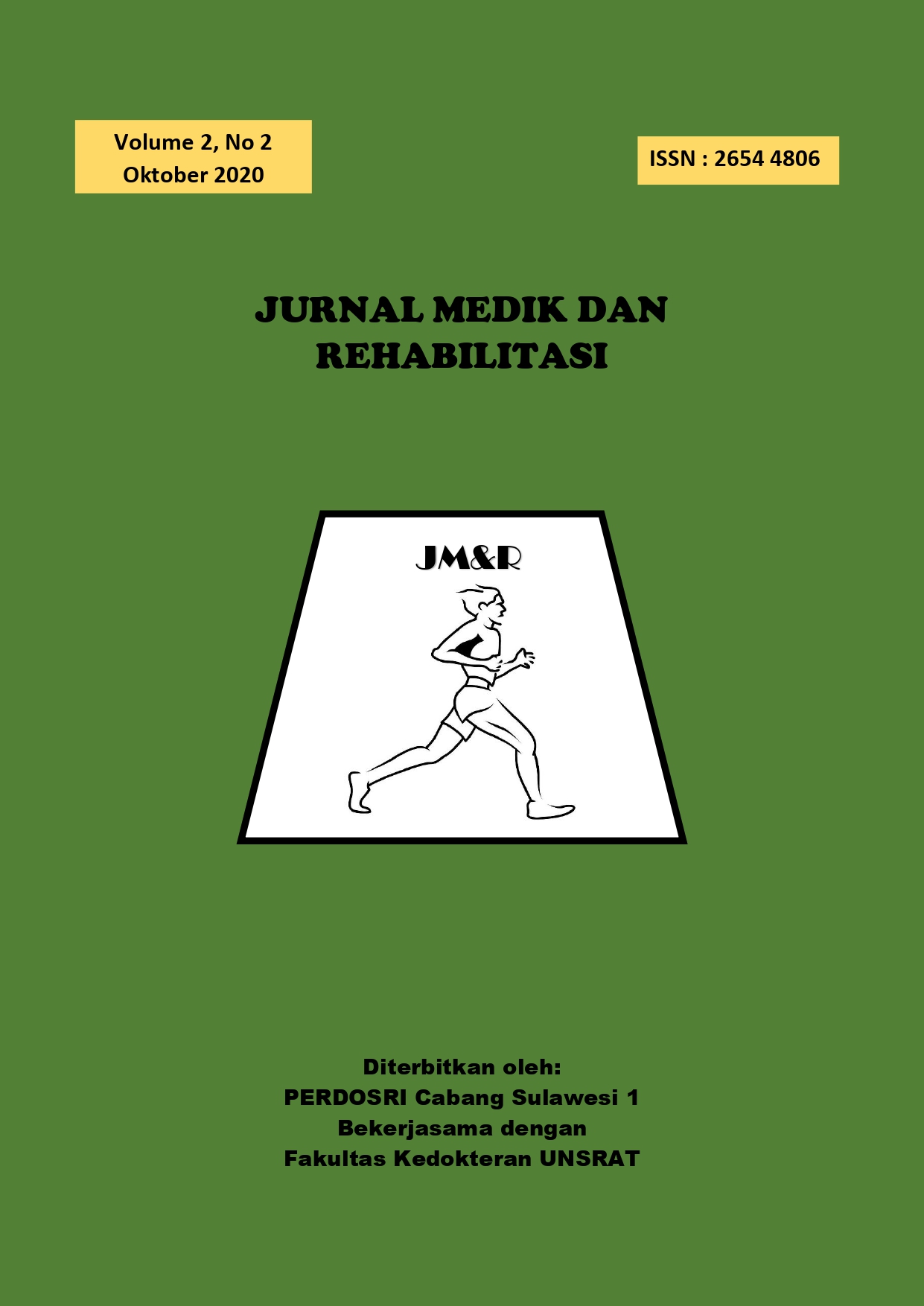MEDICAL REHABILITATION IN ACL, MENISCAL AND MCL INJURY PATIENT WITH CONSERVATIVE MANAGEMENT
Abstract
ACL injuries most commonly occur following a hyperextension injury or from a significant valgus force of blow to the knee. MCL injury occurs from a valgus force to the knee joint that stretches or tears the ligament. Nonoperative management in ACL injury with activity modification produces good to excellent results in 57% of patients older than 40 years. Acute phase focuses on the treatment of tissue injury, clinical signs, and symptoms. The goal in this stage is to allow tissue healing while reducing pain and inflammation. Recovery phase focuses on obtaining normal passive and active knee motion, improving knee muscle function, achieving normal muscle balance of the hamstrings and quadriceps, and working on proprioception. Functional phase focuses on increasing the power and endurance of the lower extremities while improving neuromuscular control.
References
Ravikanth R, Singh JK, Pavithran A, Pilar A, Nagotu A, Sarkar P, et al. A review of sports-related injuries: Head to toe spectrum. Apollo Med 2018;15:79-87.
Ferretti A, Monaco E, Ponzo A et al. The unhappy triad of the knee re-revisited. International Orthopaedics. Springer. 2018. https://doi.org/10.1007/s00264-018-4181-7
Lippert, L. Knee Joint. In : Clinical Kinesiology and Anatomy 5th Edition. Philadelphia. F.A. Davis Company. 2011. 283-300.
Frontera, W. Sports Medicine. In : DeLisa’s Physical Medicine & Rehabilitation Principles and Practice 5th Edition. Philadelphia. Lippincott Williams & Wilkins, A Wolters Kluwer. 2010. 1413-1436.
Frontera W, Silver J and Rizzo T. Knee and Leg. In : Essentials of Physical Medicine and Rehabilitation and Rehabilitation Musculoskeletal Disorders, Pain, and Rehabilitation. Philadelphia. Elsevier. 2019. 350-450.
Gee S, Tennent D, Cameron K et al. Th Burden of Meniscus Injury in Young and Physically Active Populations. Clinical Sports Medicine 39 (2020) 13-27. https://doi.org/10.1016/j.csm.2019.08.008
Prentice, W. Rehabilitation of Knee Injuries. In : Rehabilitation Technique for Sports Medicine and Athletic Training. New York. Mc Graw Hill. 2011. 526-578.
Wahyuni LK, Tulaar ABM. White Book Ilmu Kedokteran Fisik Dan Rehabilitasi. Jakarta. PERDOSRI. 2012.
Miller M, Thompson S. Anterior Cruciate Ligament Injuries. In : Orthopaedic Sports Medicine Principles and Practice. Philadelphia. Elsevier. 2020. 1185-1198.
Rolf, C. Knee Injuries. In : The Sports Injuries Handbook Diagnosis and Management. A & C Black. London. 2007. 78-129.
Ploumis A., Gkiatas I. (2019) Musculoskeletal Pain Management. In: Paschos N., Bentley G. (eds) General Orthopaedics and Basic Science. Orthopaedic Study Guide Series. Springer, Cham.
Riegel R, Godbold J. Laser Therapy and Injury Rehabilitation. In : Laser Therapy Photobiomodulation. London. Wiley Blackwell. 2017. 252-266.
Cameron, M. Thermal Agents, Electromagnetic Agents. In : Physical Agents in Rehabilitation From Research to Practice 5th Edition. Missouri. Elsevier Saunders. 2017. 173-198, 283-303.
Takenori A, et al. Immediate pain relief effect of low level laser therapy for sports injuries: Randomized, double-blind placebo clinical trial. J Sci Med Sport (2016), http://dx.doi.org/10.1016/j.jsams.2016.03.006
Donatelli R, Wooden M. Surgery of the Knee and Rehabilitation Principles. In : Orthopaedic Physical Therapy. Missouri. Elsevier. 2010. 519-536.
Pescatello, L. ACSM’S Guidelines for Exercise Testing and Prescription 9th Edition. Philadelphia. Lippincott Williams & Wilkins. 2014.
Cameron, M. Thermal Agents, Electromagnetic Agents. In : Physical Agents in Rehabilitation From Research to Practice 5th Edition. Missouri. Elsevier Saunders. 2017. 173-198, 283-303.

